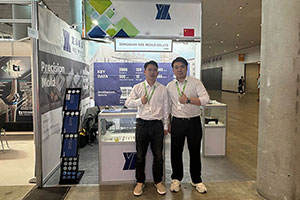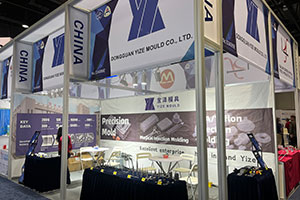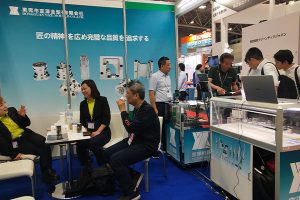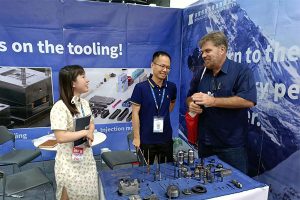A Comprehensive Analysis of Tungsten Carbide Processing Flow
I. Introduction Tungsten carbide, as a typical representative of high-performance cemented carbide materials, stands out with its remarkable characteristics such as high hardness, high wear resistance, and high red hardness. […]
I. Introduction
Tungsten carbide, as a typical representative of high-performance cemented carbide materials, stands out with its remarkable characteristics such as high hardness, high wear resistance, and high red hardness. It has found extensive applications in numerous key fields including metal cutting, die manufacturing, and aerospace. The processing of tungsten carbide is akin to a precise “artistic creation,” being complex and meticulous, with each step strictly adhering to established procedures and norms. This article will provide a comprehensive and in-depth introduction to the processing flow of tungsten carbide, covering key steps such as material preparation, pretreatment, cutting, rough machining, finish machining, heat treatment, inspection, and packaging, offering readers a detailed and practical knowledge guide.
II. Material Preparation: Laying the Foundation for Processing
Material preparation marks the starting point of tungsten carbide processing, and its significance cannot be overstated. When selecting tungsten carbide materials, multiple factors need to be comprehensively considered. The chemical composition determines the basic properties of tungsten carbide, while the physical properties directly impact the difficulty of processing. Moreover, processing requirements are also a crucial basis for material selection. High-quality tungsten carbide materials should possess high purity, a uniform organizational structure, and good processing performance. Additionally, it is essential to precisely select the appropriate tungsten carbide model and specification according to specific processing requirements, providing a solid guarantee for subsequent processing.
Notre activité : pièces en carbure, pièces de moule, moules d'injection médicale, moules d'injection de précision, moulage par injection de téflon PFA, raccords de tubes PFA. email : [email protected],whatsapp:+8613302615729.
III. Pretreatment: Cleaning the Material Surface and Enhancing Processing Performance
Before formally embarking on the tungsten carbide processing journey, the pretreatment step is indispensable. The main mission of this step is to remove impurities such as oil stains and oxides on the material surface, creating favorable conditions for subsequent processing and improving the material’s processing performance. Common pretreatment methods each have their unique features: Pickling utilizes the chemical action of acidic solutions to effectively remove oxides and rust on the material surface, restoring its cleanliness. Sandblasting employs high-speed ejected sand particles to strongly impact the material surface, not only removing oil stains and impurities but also creating a certain surface roughness, enhancing the adhesion for subsequent processing. Polishing achieves smooth treatment of the material surface through the fine grinding of a polishing machine, significantly improving the surface finish and laying the foundation for creating high-quality products.
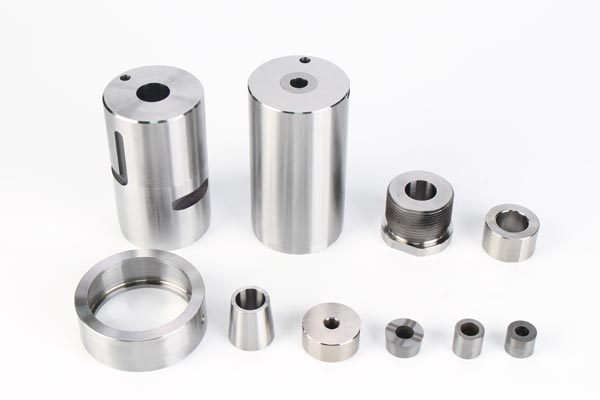
IV. Cutting: Shaping the Initial Form to Meet Diverse Needs
Cutting, as one of the key steps in tungsten carbide processing, is responsible for cutting the tungsten carbide material into the required shapes and sizes. Depending on different processing requirements, various cutting methods are available for selection. Wire cutting uses a fine wire or metal wire as a tool, precisely cutting the material through the energy generated by electrical discharge. It is suitable for processing parts with complex shapes and high precision requirements. Laser cutting relies on the powerful energy of a high-energy laser beam to instantly heat and melt the material, achieving rapid and precise cutting. It is especially suitable for processing thin sheet materials. Water jet cutting utilizes the high-pressure energy carried by high-speed water flow to impact the material surface, cutting the material through the cutting force of the water flow. It has the advantages of a wide cutting range and no heat-affected zone, making it suitable for cutting various materials.
V. Rough Machining: Preliminary Shaping and Paving the Way for Finish Machining
Rough machining is a significant milestone in the tungsten carbide processing progress. In this stage, the main task is to conduct preliminary shape and size processing on the material, removing excess material and laying a solid foundation for subsequent finish machining. Common rough machining methods include milling, turning, and drilling. Milling uses a rotating milling cutter to perform cutting processing on the material, enabling the machining of various shapes such as planes, grooves, and curved surfaces. Turning utilizes a lathe tool on a lathe to perform rotary cutting on the material, mainly used for processing rotating parts such as shafts and disks. Drilling uses a drill bit to drill holes in the material, meeting various hole processing requirements.
During rough machining, the following points require special attention:
- Selection of Cutting Parameters: Cutting parameters act as the “baton” for processing, including cutting speed, feed rate, and cutting depth. They need to be scientifically and reasonably selected according to the material properties and processing requirements to ensure the stability and efficiency of the processing process.
- Sélection des outils: The tool is the “sharp edge” for processing. Carefully selecting appropriate tools according to processing requirements and material properties is crucial. For example, tungsten carbide milling cutters and lathe tools can significantly improve processing efficiency and quality.
- Selection of Processing Equipment: Processing equipment serves as the “cornerstone” for processing. Selecting high-precision and high-rigidity processing equipment can provide a solid guarantee for processing accuracy and efficiency, ensuring that the processed parts meet design requirements.
VI. Finish Machining: Striving for Perfection and Pursuing Ultimate Quality
Finish machining is the core step in tungsten carbide processing and also the stage with the most stringent requirements for processing accuracy. In this stage, the main focus is on conducting fine cutting and grinding processing on the material to achieve the required dimensional accuracy and surface finish. Common finish machining methods include grinding, lapping, and polishing. Grinding uses a grinding wheel to perform high-speed rotary cutting processing on the material, enabling high-precision dimensional processing and surface finishing. Lapping employs a lapping tool to conduct meticulous processing on the material, further improving dimensional accuracy and surface quality. Polishing achieves smooth treatment of the material surface through a polishing machine, making the surface reach an extremely high finish, presenting a mirror-like effect.
During finish machining, the following key points need to be focused on:
- Control of Processing Temperature: Tungsten carbide is a material sensitive to heat. During processing, the processing temperature must be strictly controlled to prevent excessive temperatures from causing a decline in material properties and affecting part quality.
- Use of Cutting Fluid: In the finish machining process, cutting fluid plays a dual role of cooling and lubrication. The reasonable use of cutting fluid can effectively reduce cutting resistance, minimize tool wear, extend tool service life, and improve the surface quality of processed parts.
- Control of Processing Accuracy: The finish machining stage has extremely high requirements for processing accuracy. Advanced processing equipment and measuring tools need to be used to conduct real-time monitoring and precise adjustment of the processing process, ensuring that the processing accuracy fully meets design requirements.
VII. Heat Treatment: Modifying and Strengthening to Improve Material Properties
Heat treatment is an indispensable and important step in tungsten carbide processing, akin to injecting “magic power” into tungsten carbide. It can significantly change the organizational structure and properties of tungsten carbide, enhancing its hardness, wear resistance, and red hardness. Common heat treatment methods each have unique effects: Quenching involves heating the tungsten carbide to a temperature above the critical temperature and then rapidly cooling it, enabling the material to obtain high hardness and wear resistance. However, it also generates significant internal stresses. Tempering heats the quenched tungsten carbide to an appropriate temperature, holds it for a certain period, and then cools it to room temperature. Through this process, it reduces the hardness and brittleness of the material and improves its toughness and comprehensive properties. Annealing heats the tungsten carbide to a certain temperature and then slowly cools it, eliminating internal stresses and organizational defects in the material and improving its processing performance and stability.
VIII. Inspection and Packaging: Quality Control and Safe Transportation
After the tungsten carbide processing is successfully completed, the inspection and packaging steps become the last line of defense to ensure product quality. The inspection work acts as “sharp eyes,” mainly conducting comprehensive inspections on key properties such as the dimensional accuracy, surface finish, and hardness of the processed parts. Advanced inspection equipment and scientific inspection methods are used to ensure that each processed part meets strict quality requirements. The packaging step is like putting on a “protective suit” for the product. The inspected and qualified processed parts are carefully packaged, using appropriate packaging materials and methods to prevent the products from being damaged by collisions, corrosion, etc. during transportation and storage, ensuring that the products arrive at customers’ hands safely and intact.
IX. Conclusion
The processing of tungsten carbide is a precise and complex technological journey, where each step is closely interconnected and mutually influential. Only through the organic integration and synergistic effect of steps such as material preparation, pretreatment, cutting, rough machining, finish machining, heat treatment, inspection, and packaging can the quality and performance of tungsten carbide processed parts reach an ideal state. In actual processing, processing personnel need to fully understand the material properties, closely combine processing requirements, scientifically and reasonably select processing methods and parameters, and continuously optimize the processing technology. Only in this way can they ensure processing quality while improving processing efficiency and provide high-quality tungsten carbide products for the development of various industries.


